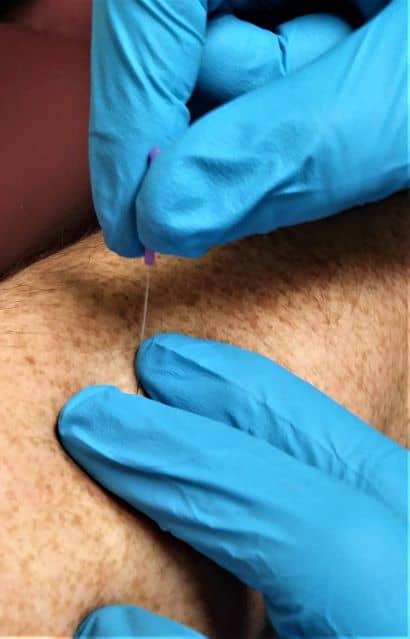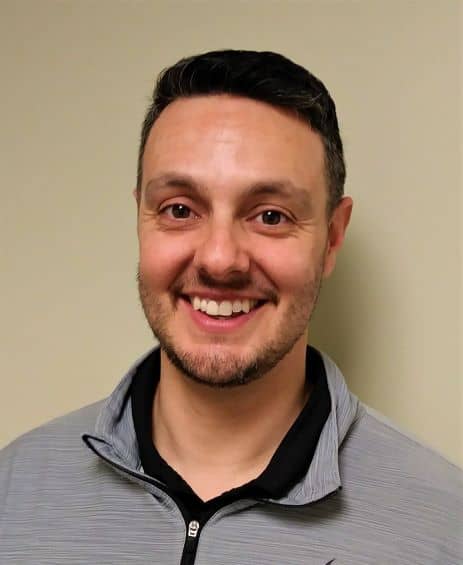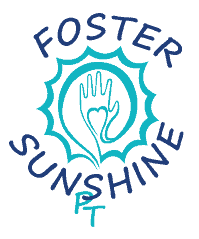
Dry needling is an intramuscular manual therapy (IMT) technique used by physical therapists to target myofascial trigger points through the application of acupuncture needles.
Although Lewit published the first study to recognize dry needling in 1979, the treatment received minimal attention in the following years. It wasn’t until the 2000s that the technique became more accepted, studied, and widely offered as a service in the world of physical therapy.
Dry needling was not something we even touched on when I was in school. While I have started to hear rumblings of it over the past decade or so, I had never had any first-hand exposure to it until the last couple of years in my career.
While dry needling remains something I am not sure I will ever be comfortable doing myself, I find it clinically fascinating and wanted to learn more.
Conversation with a Dry Needling Therapist
George Sparrow, PT, DPT, co-owner of Rhode Island Physical Therapy and Sports Medicine, has advanced training in dry needling and was kind enough to answer some questions surrounding this topic.

Full disclosure: I have the pleasure and privilege of working with and for George.
What is the theory behind dry needling?
The concept behind trigger point dry needling is the deactivation of taut bands and trigger points. The formation of a trigger point is due to excessive taut bands within the muscle. Taut bands are the body’s natural response to protect from potential muscle damage. This response is triggered by an increase in the release of acetylcholine from the motor endplate and also inhibition of the breakdown of the acetylcholine.
When a dry needle is applied to the trigger point, it causes a local twitch response. These local twitch responses have been shown to regulate the concentration of chemicals in the trigger point, causing a decrease in taut bands.
I believe there are some misconceptions out there about dry needling, both among patients and therapists. Do you see or hear that a lot?
I’m not really aware of a lot of misconceptions. I think that may be because I have been practicing dry needling since becoming a PT. I guess there can be some misconceptions about the dangers of putting a needle into your patient, but I would be interested to hear what other misconceptions there are.
Note: I wanted to address the two main misconceptions I have heard. First is that dry needling sounds like acupuncture. Although the same needles are used, the goal of acupuncture is to impact the flow of energy along meridian lines as opposed to the direct treatment of trigger points as George has described. Second, many believe there is an injection involved. This is not the case; as the ‘dry’ in dry needling implies, there is no liquid or medication involved.
How did you get interested in dry needling? What made you pursue it?
I was first introduced to dry needling when I was doing my clinical rotations for grad school. It was a fairly new treatment option at the time and was only legal in a few states. New Hampshire was one of those states, and also where my first clinical rotation was located. I built a good relationship with my clinical instructor, who was also the owner, and I was offered a job at his facility. Dry needling was a treatment used frequently in that facility, so it was important for me to become certified.
Tell me about the training/certification process.
There are multiple continuing education companies for dry needling. My education was through Myopain Seminars. Their process required three separate dry needling courses. Each seminar is three days long, and all three courses must be completed to receive certification. The third and final advanced course has a practical on the final day.
How do patients respond to the idea of it? Are people skeptical or open-minded?
Patients seem to be the most skeptical when filling out the consent for needling form (which entails potential risks and dangers of the treatment). They seem to become more at ease when the treatment is explained in more detail and their concerns are addressed.
Do you always do it in conjunction with traditional PT interventions or can it be a stand-alone treatment?
Myofascial release and soft tissue techniques are encouraged in conjunction with IMT. This allows the treatment to address the specific trigger points/tight muscle bands and the tension of the muscle as a whole.
Tell me about the treatment impact. How soon will patients see a change? Does it always work?
Treatment can be painful during the needling process. After the treatment, most patients will feel tender at the treatment site. The patient’s symptoms can subside immediately or slowly, depending on the patient’s diagnosis. As for success, the treatment will generally always work if the diagnosis is correct and the treatment is performed correctly.
Do you do any specific marketing for IMT services? How often do you get referrals specifically for dry needling?
We market the dry needling just like we market all of the other treatment options at the clinic. However, we do provide more information in our brochures because of the potential unfamiliarity of dry needling. Referrals have increased with time and through word of mouth; we do receive frequent requests for dry needling.
With what proportion of your caseload do you do needling?
My guess would be 30%. Although, that number can vary for no particular reason or just coincidence.
What do you want other PTs to know about dry needling?
I think that they should understand the benefits of the concept beyond the needling (i.e referred pain that can lead us in directions away from the pain site). This is something that can help identify the treatment area regardless of treating it with IMT.
What advice would you give to PTs that are considering getting certified?
It is a fantastic tool to add to a PT’s bag of tricks. As practitioners, all of us can benefit from broadening our scope of practice. I would suggest weighing out how much of your population will benefit from the treatment. But most importantly, is it something you would be comfortable doing?

Recent Comments